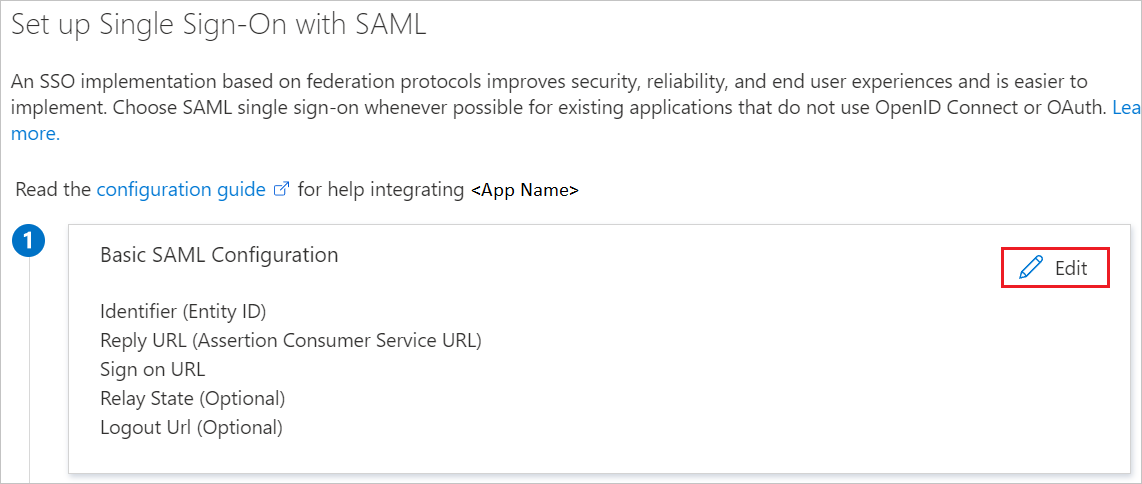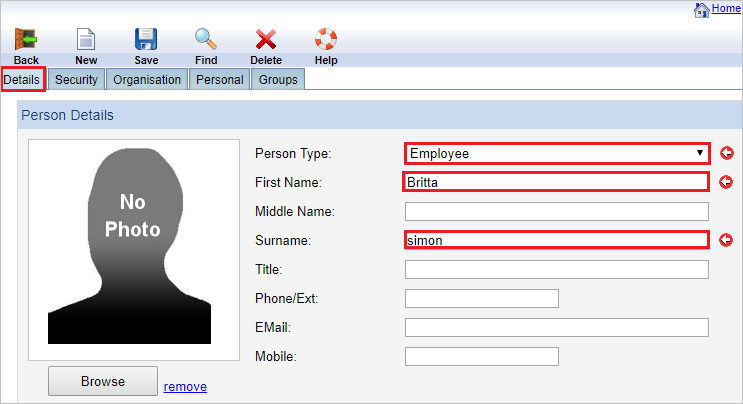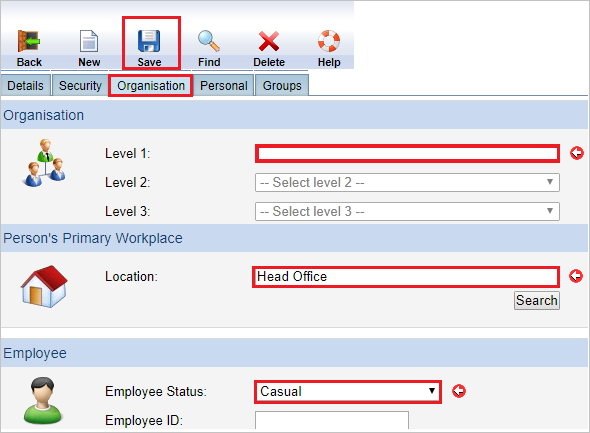Note
Access to this page requires authorization. You can try signing in or changing directories.
Access to this page requires authorization. You can try changing directories.
In this article, you learn how to integrate Riskware with Microsoft Entra ID. When you integrate Riskware with Microsoft Entra ID, you can:
- Control in Microsoft Entra ID who has access to Riskware.
- Enable your users to be automatically signed-in to Riskware with their Microsoft Entra accounts.
- Manage your accounts in one central location.
Prerequisites
To configure Microsoft Entra integration with Riskware, you need the following items:
- A Microsoft Entra subscription. If you don't have a Microsoft Entra environment, you can get a free account.
- Riskware single sign-on enabled subscription.
- Along with Cloud Application Administrator, Application Administrator can also add or manage applications in Microsoft Entra ID. For more information, see Azure built-in roles.
Scenario description
In this article, you configure and test Microsoft Entra single sign-on in a test environment.
- Riskware supports SP initiated SSO.
Add Riskware from the gallery
To configure the integration of Riskware into Microsoft Entra ID, you need to add Riskware from the gallery to your list of managed SaaS apps.
- Sign in to the Microsoft Entra admin center as at least a Cloud Application Administrator.
- Browse to Entra ID > Enterprise apps > New application.
- In the Add from the gallery section, type Riskware in the search box.
- Select Riskware from results panel and then add the app. Wait a few seconds while the app is added to your tenant.
Alternatively, you can also use the Enterprise App Configuration Wizard. In this wizard, you can add an application to your tenant, add users/groups to the app, assign roles, and walk through the SSO configuration as well. Learn more about Microsoft 365 wizards.
Configure and test Microsoft Entra SSO for Riskware
Configure and test Microsoft Entra SSO with Riskware using a test user called B.Simon. For SSO to work, you need to establish a link relationship between a Microsoft Entra user and the related user in Riskware.
To configure and test Microsoft Entra SSO with Riskware, perform the following steps:
- Configure Microsoft Entra SSO - to enable your users to use this feature.
- Create a Microsoft Entra test user - to test Microsoft Entra single sign-on with B.Simon.
- Assign the Microsoft Entra test user - to enable B.Simon to use Microsoft Entra single sign-on.
- Configure Riskware SSO - to configure the single sign-on settings on application side.
- Create Riskware test user - to have a counterpart of B.Simon in Riskware that's linked to the Microsoft Entra representation of user.
- Test SSO - to verify whether the configuration works.
Configure Microsoft Entra SSO
Follow these steps to enable Microsoft Entra SSO.
Sign in to the Microsoft Entra admin center as at least a Cloud Application Administrator.
Browse to Entra ID > Enterprise apps > Riskware > Single sign-on.
On the Select a single sign-on method page, select SAML.
On the Set up single sign-on with SAML page, select the pencil icon for Basic SAML Configuration to edit the settings.

On the Basic SAML Configuration section, perform the following steps:
a. In the Identifier (Entity ID) text box, type one of the following URLs:
Environment URL UAT https://riskcloud.net/uatPROD https://riskcloud.net/prodDEMO https://riskcloud.net/demob. In the Sign on URL text box, type a URL using one of the following patterns:
Environment URL Pattern UAT https://riskcloud.net/uat?ccode=<COMPANYCODE>PROD https://riskcloud.net/prod?ccode=<COMPANYCODE>DEMO https://riskcloud.net/demo?ccode=<COMPANYCODE>Note
The Sign on URL value isn't real. Update the value with the actual Sign-On URL. Contact Riskware Client support team to get the value. You can also refer to the patterns shown in the Basic SAML Configuration section.
On the Set up Single Sign-On with SAML page, in the SAML Signing Certificate section, select Download to download the Federation Metadata XML from the given options as per your requirement and save it on your computer.

On the Set up Riskware section, copy the appropriate URL(s) as per your requirement.

Create and assign Microsoft Entra test user
Follow the guidelines in the create and assign a user account quickstart to create a test user account called B.Simon.
Configure Riskware SSO
In a different web browser window, sign in to your Riskware company site as an administrator.
On the top right, select Maintenance to open the maintenance page.

In the maintenance page, select Authentication.
In Authentication Configuration page, perform the following steps:

a. Select Type as SAML for authentication.
b. In the Code textbox, type your code like AZURE_UAT.
c. In the Description textbox, type your description like AZURE Configuration for SSO.
d. In Single Sign On Page textbox, paste the Login URL value.
e. In Sign out Page textbox, paste the Logout URL value.
f. In the Post Form Field textbox, type the field name present in Post Response that contains SAML like SAMLResponse.
g. In the XML Identity Tag Name textbox, type attribute, which contains the unique identifier in the SAML response like NameID.
h. Open the downloaded Metadata Xml from Azure portal in notepad, copy the certificate from the Metadata file and paste it into the Certificate textbox.
i. In Consumer URL textbox, paste the value of Reply URL, which you get from the support team.
j. In Issuer textbox, paste the value of Identifier, which you get from the support team.
Note
Contact Riskware Client support team to get these values
k. Select Use POST checkbox.
l. Select Use SAML Request checkbox.
m. Select Save.
Create Riskware test user
To enable Microsoft Entra users to sign in to Riskware, they must be provisioned into Riskware. In Riskware, provisioning is a manual task.
To provision a user account, perform the following steps:
Sign in to Riskware as a Security Administrator.
On the top right, select Maintenance to open the maintenance page.

In the maintenance page, select People.

Select Details tab and perform the following steps:

a. Select Person Type like Employee.
b. In First Name textbox, enter the first name of user like Britta.
c. In Surname textbox, enter the last name of user like Simon.
On the Security tab, perform the following steps:

a. Under Authentication section, select the Authentication mode, which you have setup like AZURE Configuration for SSO.
b. Under Logon Details section, in the User ID textbox, enter the email of user like
brittasimon@contoso.com.c. In the Password textbox, enter password of the user.
On the Organization tab, perform the following steps:

a. Select the option as Level1 organization.
b. Under Person's Primary Workplace section, in the Location textbox, type your location.
c. Under Employee section, select Employee Status like Casual.
d. Select Save.
Test SSO
In this section, you test your Microsoft Entra single sign-on configuration with following options.
Select Test this application, this option redirects to Riskware Sign-On URL where you can initiate the login flow.
Go to Riskware Sign-On URL directly and initiate the login flow from there.
You can use Microsoft My Apps. When you select the Riskware tile in the My Apps, this option redirects to Riskware Sign-On URL. For more information, see Microsoft Entra My Apps.
Related content
Once you configure Riskware you can enforce session control, which protects exfiltration and infiltration of your organization’s sensitive data in real time. Session control extends from Conditional Access. Learn how to enforce session control with Microsoft Cloud App Security.